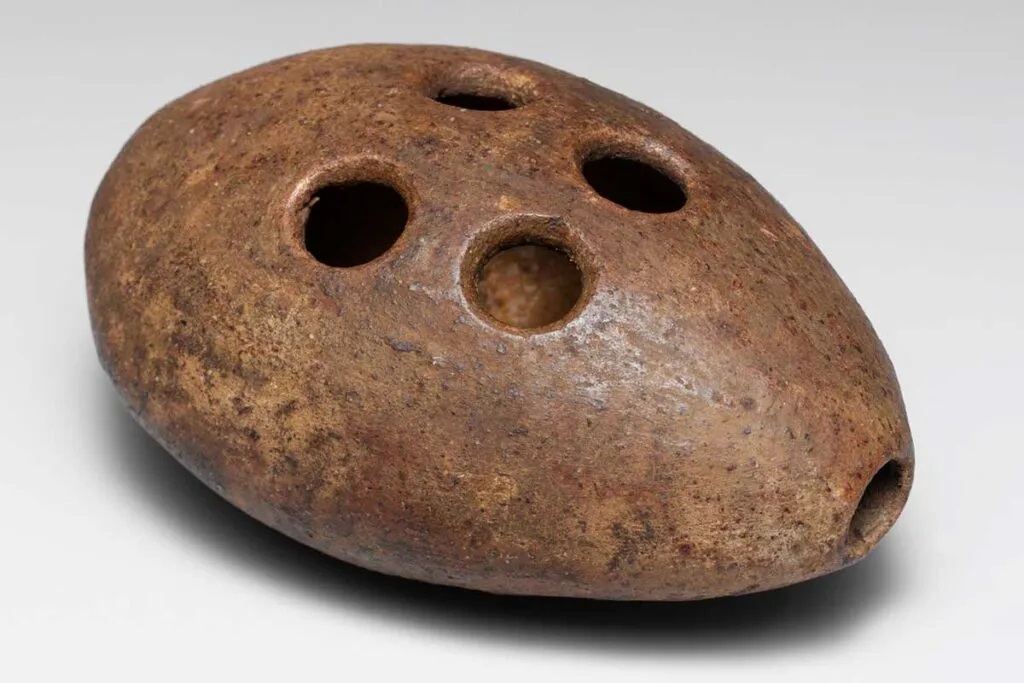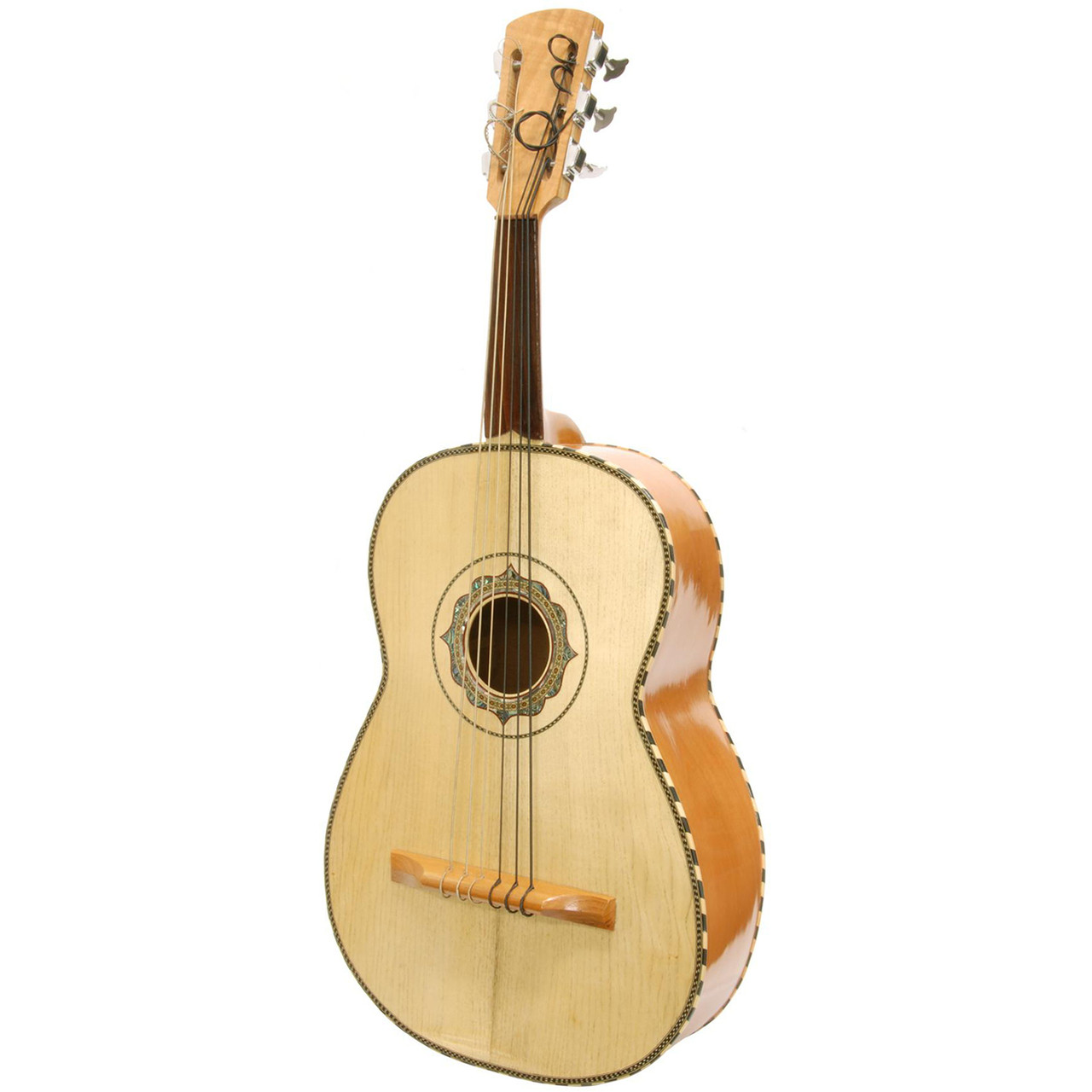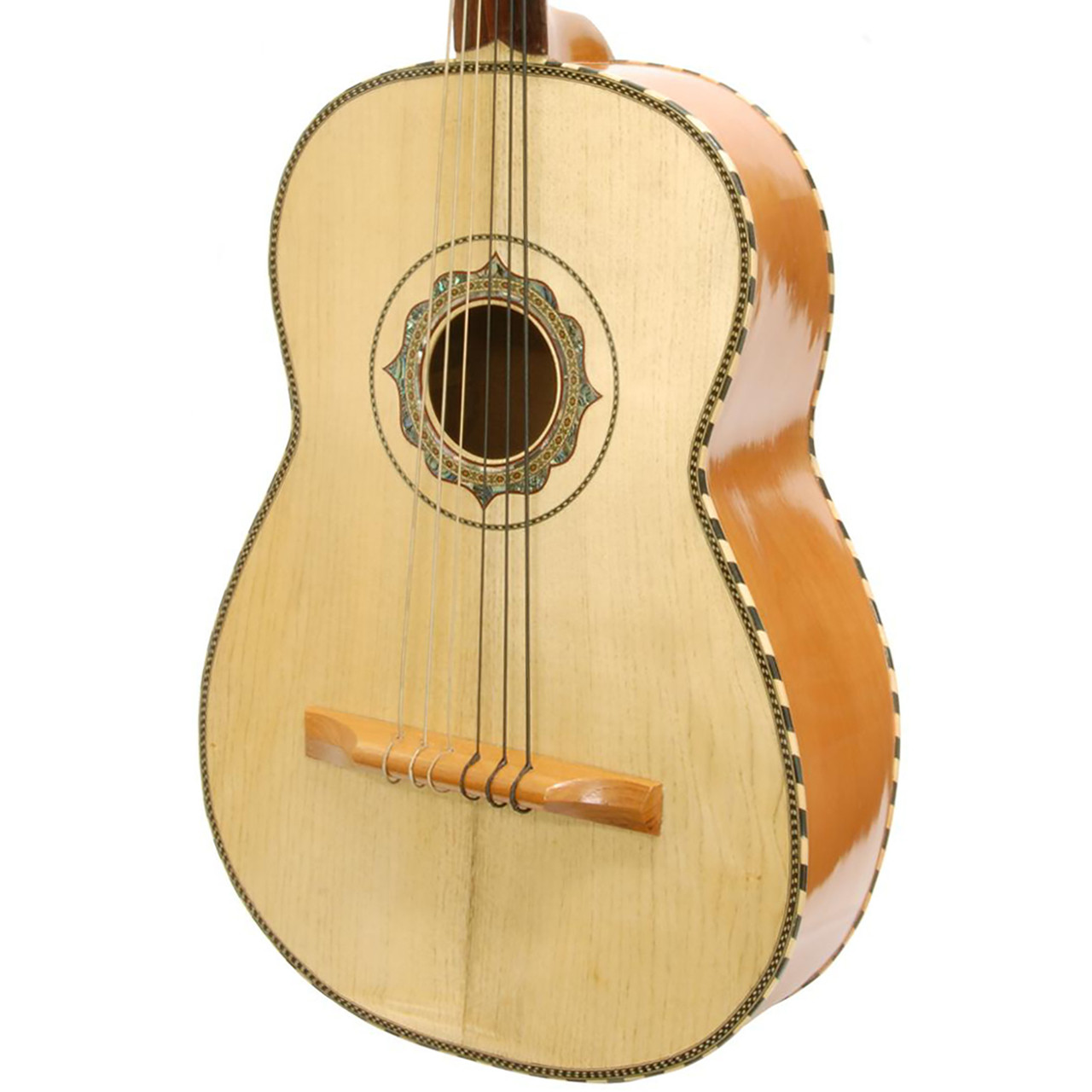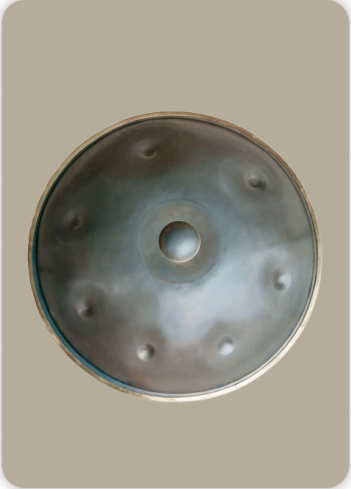Guitarrón Mexicano
Plucked Instruments
America
Between 1001 and 1900 AD
Video
The Guitarrón Mexicano is a large, deep-bodied, six-string acoustic bass instrument that serves as the rhythmic and harmonic foundation of mariachi music. It is one of the most distinctive instruments in traditional Mexican folk music, particularly within mariachi ensembles. With its unique shape, resonant sound, and traditional playing techniques, the guitarrón has played a crucial role in shaping the sound of mariachi music for centuries.
History and Origins
The guitarrón mexicano has its roots in colonial Mexico, with influences tracing back to European instruments brought by Spanish settlers in the 16th century. It evolved from a variety of baroque guitars and bass instruments, adapting to the musical traditions of Mexico and the needs of mariachi ensembles. By the 19th century, the guitarrón had established itself as a fundamental instrument in mariachi music, replacing the harp as the primary bass instrument.
Mariachi music itself originated in the western regions of Mexico, particularly in the states of Jalisco, Nayarit, and Michoacán. As mariachi music evolved and gained popularity, the guitarrón became a central element of the ensemble, providing the deep, driving bass lines essential for the genre’s distinctive sound.
Construction and Design
The guitarrón is a large, deeply curved instrument, similar in appearance to an oversized guitar. It typically measures about 95-100 cm (37-39 inches) in length and has a deep body, which contributes to its powerful and resonant bass sound. The guitarrón is constructed from a variety of woods, with cedar, mahogany, and rosewood commonly used for the body, and spruce for the soundboard.
Components:
Body: The guitarrón’s deep, arched back enhances sound projection and resonance. The large size and curvature allow for a rich, full-bodied tone.
Neck and Fingerboard: Unlike standard guitars, the guitarrón has a shorter, fretless fingerboard. This design allows musicians to create smooth glissando effects and adjust intonation freely.
Strings: The guitarrón has six thick strings made of a combination of nylon and metal-wound materials. These strings are tuned to A1-D2-G2-C3-E3-A2, forming a tuning system that emphasizes bass frequencies.
Bridge and Tuning Pegs: The bridge is traditionally made of wood, while the tuning pegs are large and designed for precise adjustments due to the instrument’s thick strings.
Playing Technique
The guitarrón mexicano is played by plucking the strings with the fingers in a technique known as punteado. Unlike a conventional bass guitar, the guitarrón requires significant finger strength to produce clear, powerful notes due to the thick, high-tension strings. The playing technique involves:
Left-Hand Techniques
Glissando: Smooth sliding between notes for expressive phrasing.
Octave Doubling: Since the guitarrón is often played in octaves, the left hand must be adept at stretching across the fingerboard to reach notes in different registers.
Right-Hand Techniques
Thumb and Index Alternation: A common technique where the thumb and index finger alternate plucking the strings to maintain rhythmic precision.
Double-Stopping: Plucking two strings simultaneously to create a fuller sound.
Role in Mariachi Music
The Guitarrón Mexicano plays a fundamental role in Mariachi music as the ensemble’s bass instrument. This large, deep-bodied, fretless six-string instrument provides the rhythmic and harmonic foundation, producing a rich, resonant, and percussive sound that drives the mariachi’s characteristic energy. Played with strong plucking techniques using the fingers, the guitarrón delivers a deep, booming tone that compensates for the absence of a traditional bass guitar or drum. It often plays syncopated bass lines that enhance the rhythmic feel, interacting dynamically with the vihuela and guitarra to create a balanced, vibrant accompaniment for the trumpets, violins, and vocalists. Without the guitarrón, mariachi music would lack its distinctive depth and pulse, making it an indispensable element of the genre.
Cultural Significance
The guitarrón mexicano is more than just a musical instrument—it is a symbol of Mexican cultural identity. Mariachi music, with its vibrant performances and emotional expressiveness, is an integral part of Mexican celebrations, including festivals, weddings, and national holidays. The guitarrón’s deep tones resonate with the themes of love, patriotism, and tradition commonly found in mariachi songs.
The instrument is also prominently featured in international performances, showcasing the rich musical heritage of Mexico to audiences worldwide. It has been embraced by musicians outside of traditional mariachi circles, appearing in various fusion genres and experimental music.
Contemporary Use and Innovations
The guitarrón mexicano remains a vital instrument in contemporary mariachi music, providing the deep, resonant bass that underpins the ensemble’s sound. Traditionally crafted with a large, rounded body and six thick strings, modern luthiers have experimented with lighter materials and alternative woods to enhance playability while preserving its signature tone. Some players now incorporate piezoelectric pickups or internal microphones for better amplification in live performances and recordings, allowing the guitarrón to blend seamlessly with modern sound systems. In fusion genres, it has been used beyond mariachi, appearing in Latin jazz, folk-pop, and experimental world music, where musicians explore slap techniques and alternative tunings.
Educational programs and mariachi academies have also adapted the instrument for younger students, sometimes offering smaller-sized versions to accommodate learners. As technology advances, digital modeling and sample libraries now replicate its unique timbre, expanding its reach in contemporary music production. Despite these innovations, the guitarrón mexicano remains a deeply rooted symbol of Mexican musical heritage, balancing tradition with modern evolution.
The guitarrón mexicano is a defining element of mariachi music, offering a rich, resonant bass sound that anchors the ensemble. With its deep historical roots, meticulous craftsmanship, and distinct playing techniques, the guitarrón continues to be a vital component of Mexican musical heritage. Whether in a bustling plaza in Mexico or on an international stage, the deep, resonant tones of the guitarrón mexicano remain an enduring symbol of cultural pride and musical excellence.
FAQ
How is the Guitarrón Mexicano constructed?
The Guitarrón Mexicano is a large, deep-bodied, fretless bass guitar with a convex back. It is traditionally handmade by luthiers using precise carving and assembly techniques to ensure resonance and durability.
What materials are used to make the Guitarrón Mexicano?
The body is typically made from woods like cedar, mahogany, or rosewood, while the top is often crafted from spruce or tacote. The strings are usually nylon or gut-wound with metal to produce deep, resonant bass tones.
How is the Guitarrón Mexicano played?
It is played by plucking its thick, nylon-wound strings with the fingers, often using a technique called "alternating octaves" to create a rhythmic bass foundation in mariachi music.
 Links
Links
References
Other Instrument
Categories



















